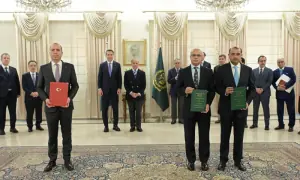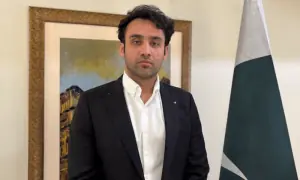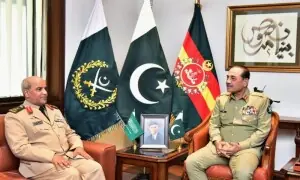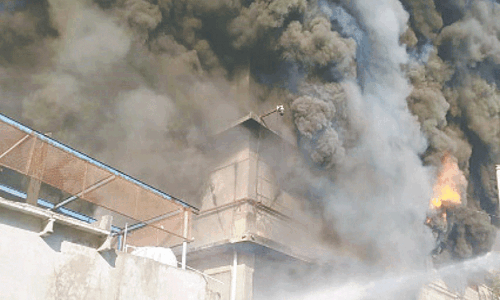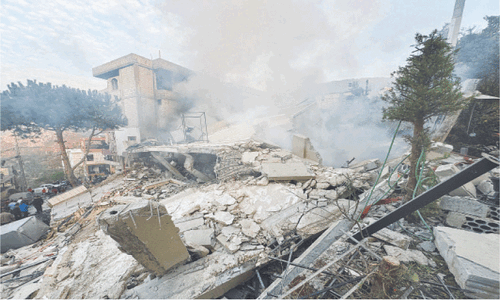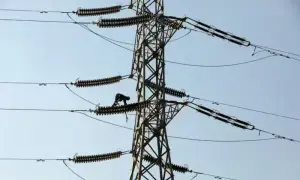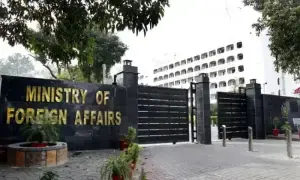PAKISTAN and India have been talked off the ledge. And while the ending came in a familiar way, with the intervention of the US, the sense in both countries is that the crisis may not necessarily be over. Of course, much depends on the talks of the DGMOs (which had yet to take place as this piece was being written) and the outcome. Indeed, even after the talks and subsequent announcements, this will be what in journalistic lingo is a ‘developing situation’ where facts and analyses remain incomplete. This piece falls in the same category. Still, here is an effort to put some issues in context.
There are signs that the ceasefire, in whatever shape, will not be easy to sustain. The lack of trust between the two sides is a reason, and along with it a sense of grievance.
The mood next door is another factor. The criticism of the Indian government over what is being seen by some as an incomplete mission is also leading to misgivings that there may be more to follow. It appears that New Delhi is finding it harder to sell this ceasefire as a success, compared to, say, Pulwama. The White House, which unlike the past, is claiming and celebrating its own role is adding to the criticism. How the BJP government deals with this will be critical in the days to come.
In Pakistan, however, the mood is celebratory and rightly so. But there is reason to be temperate, in fact many reasons, the most obvious being that a war should never be celebrated, for even victory comes at the cost of lives lost, and families left bereft. There is nothing glorious about wars.
Pakistan should be prepared for regular episodes of aggression and near-war with India.
But temperance should also be in place because of the rickety ceasefire in place. In addition to the mood across the border, the new normal that this conflict has created has led to a sobering realisation: future tensions between India and Pakistan will not simply mean clashes at the LoC but more. Strikes, drones and more are now possible, it seems. As are cyberattacks. All these, along with covert operations will simply lead to multiple challenges in India-Pakistan relations and the main victim will be ordinary people.
Pakistan should now also be prepared for regular episodes of aggression and near-war with India. The latter has followed an escalatory pattern from 2016 to the present — nine years ago, New Delhi carried out a strike against the LoC; in fact, many argued that such strikes were normal though it was unusual of India to claim one publicly rather than deny it.
Three years later, during Pulwama/ Balakot, a strike was carried out inside Pakistan rather than just across the LoC. As a result, Pakistan was compelled to respond with an airstrike. Six years later, Indian strikes have targeted city centres, civilians and military targets. This now appears to be established behaviour by India.
And while it is hard to see if there will be pressure on New Delhi to ‘improve’ upon 2025, strikes across the LoC and the border will be now seen to be kosher as a reaction to any terrorism in Indian-held Kashmir. In other words, there should be no complacency at the Pakistani end that deterrence has been established, as is being assumed. Instead, what the two countries might just have established is that this level of conflict, under the nuclear threshold, can be carried out, despite its risks.
The second factor which needs to be studied and understood, rather than simply celebrated, is Pakistan’s communication internally and internationally during this conflict. Despite some bloopers — guess which ones — Pakistan’s communication in the shape of press conferences, which could have been fewer, and interviews internationally were effective, especially as India stuck to the bare minimum. But the efficacy was directly linked to the facts — which allowed Islamabad to tell its story. India was the aggressor, Pakistan would defend itself and go no further. And then Pakistan’s air force chalked up a spectacular victory by downing Indian aircraft, which New Delhi wouldn’t even confirm; this lent further credence to Islamabad.
At the risk of offending some at home, it would help to remember Kargil; some facts are so indigestible that the best cannot spin them favourably. One can only hope that this success doesn’t encourage our side to think that it can sell everything to the world. It is essential to retain the policy of ‘restraint’, which has now started getting some bad press within.
And ‘restraint’ is also a word one can use to suggest that this ‘success’ should not allow the government to think that it’s time for the ‘hard state’ to turn harder within. After all, it appears our neighbour also acted on the assumption that Pakistan’s internal problems and divisions would prevent it from giving a ‘befitting response’, which proved incorrect. However, it is still necessary to understand that with the possibility of further clashes, it is all the more important to address some of the fault lines within. This is true of the political situation but particularly of Balochistan. It is the weakest fault line that can and is being exploited. If it has to be secured, a political solution has to be found. And along with this comes the economy, which also needs serious work.
For regardless of how 2019 and 2025 ended, the fiscal space that the government next door has will make it trigger-happy with such limited confrontation. And in order to confront this, it would be better if Pakistan also focused on making its economy stronger, more stable and less dependent on lending.
Last but not least, this confrontation has been more about Chinese weaponry versus Western, than about India and Pakistan. While the PAF’s success will strengthen Pakistan-Chinese ties, it will take time to assess what this means internationally and regionally. Only can only hope that it does not lead to the kind of scrutiny of defence cooperation, as there was of CPEC in recent years.
The writer is a journalist.
Published in Dawn, May 13th, 2025







